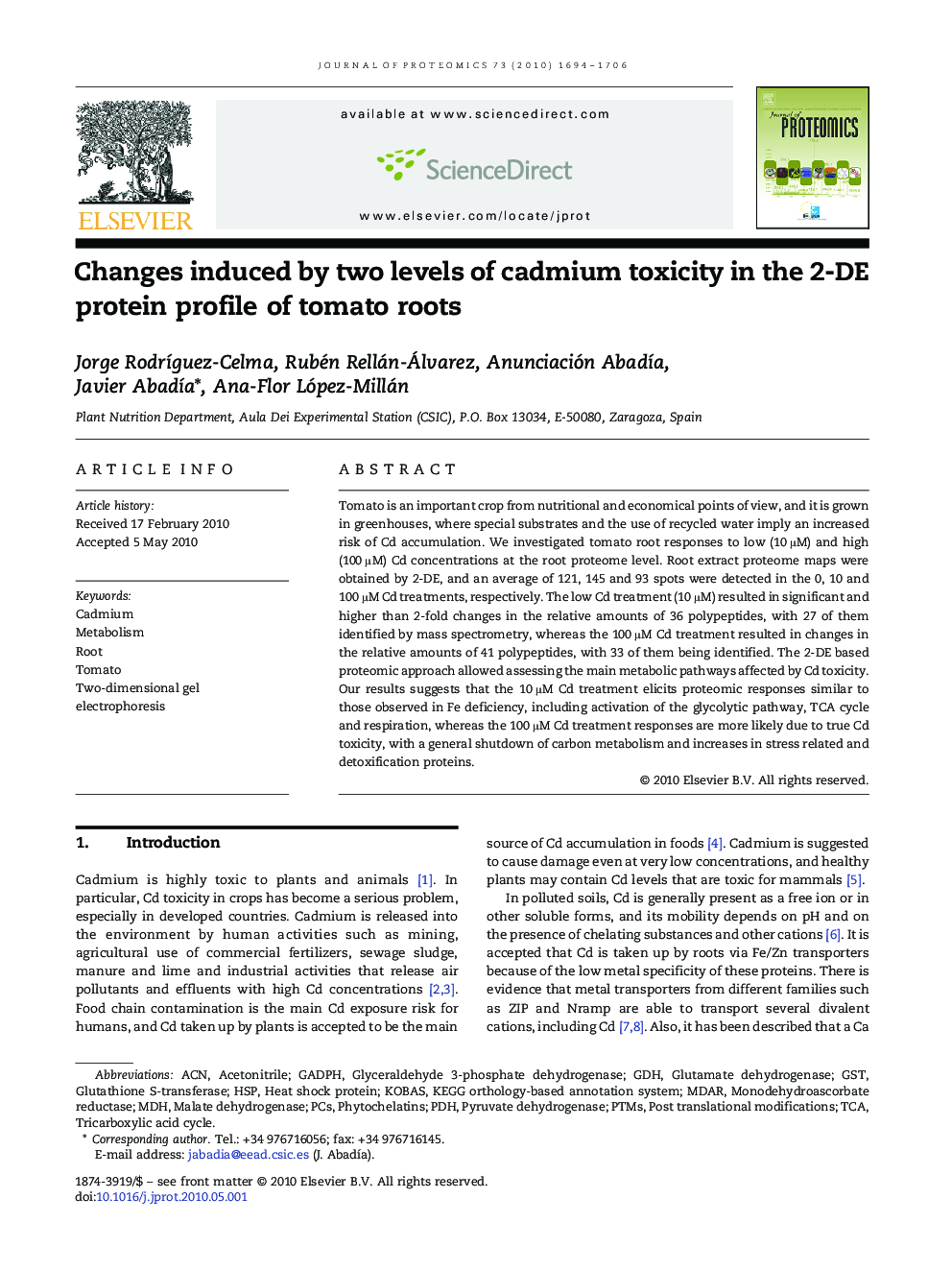| Article ID | Journal | Published Year | Pages | File Type |
|---|---|---|---|---|
| 1225647 | Journal of Proteomics | 2010 | 13 Pages |
Tomato is an important crop from nutritional and economical points of view, and it is grown in greenhouses, where special substrates and the use of recycled water imply an increased risk of Cd accumulation. We investigated tomato root responses to low (10 µM) and high (100 µM) Cd concentrations at the root proteome level. Root extract proteome maps were obtained by 2-DE, and an average of 121, 145 and 93 spots were detected in the 0, 10 and 100 µM Cd treatments, respectively. The low Cd treatment (10 µM) resulted in significant and higher than 2-fold changes in the relative amounts of 36 polypeptides, with 27 of them identified by mass spectrometry, whereas the 100 µM Cd treatment resulted in changes in the relative amounts of 41 polypeptides, with 33 of them being identified. The 2-DE based proteomic approach allowed assessing the main metabolic pathways affected by Cd toxicity. Our results suggests that the 10 µM Cd treatment elicits proteomic responses similar to those observed in Fe deficiency, including activation of the glycolytic pathway, TCA cycle and respiration, whereas the 100 µM Cd treatment responses are more likely due to true Cd toxicity, with a general shutdown of carbon metabolism and increases in stress related and detoxification proteins.
Graphical abstractFigure optionsDownload full-size imageDownload high-quality image (90 K)Download as PowerPoint slide
